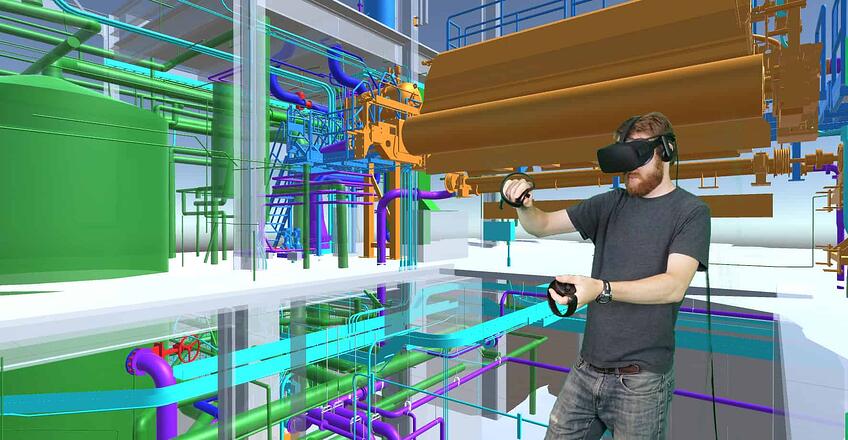The Intersection Of Civil Engineering And Virtual Reality For Construction Safety Training

Civil engineering is an exciting field that requires innovation and creativity to solve complex challenges. Although traditional learning methods such as lectures and textbooks are still commonplace, virtual reality is an emerging educational tool that is being increasingly utilized in civil engineering education.
In this article, we will explore the different uses of virtual reality in civil engineering education and how it is enhancing the learning experience for students.
Introduction
Virtual reality is a computer-generated simulation that allows users to interact with an artificial environment. It is an immersive experience that can simulate real-world scenarios and visualize complex concepts in a more tangible way.
In the realm of civil engineering, virtual reality is becoming increasingly popular due to its ability to recreate construction sites, buildings, bridges, and other structures. The technology provides students with a way to visualize the different components of a building, analyze structures, and simulate the effects of natural disasters and other external forces.
Uses of Virtual Reality in Civil Engineering Education
1. Site Analysis
Virtual reality can be used to analyze and assess a construction site before the commencement of the project. This allows students to identify any obstacles such as slopes, contours, and vegetation that may present difficulties during construction. It also allows engineers to virtually simulate different conditions and construction methods, allowing them to choose the best solution for the job.
2. Safety Training
Construction sites can be dangerous, and safety is a critical concern. Virtual reality can be used to simulate hazardous situations such as falls, equipment failures, or environmental conditions such as extreme weather events. This provides students with simulated experiences that simulate real-life situations without endangering themselves or others.
3. Structural Analysis
Virtual reality is a powerful tool that can be used to analyze and evaluate a structure's performance under different loading conditions and natural disasters such as earthquakes, hurricanes, and tornadoes. This allows students to witness the consequences of suboptimal design and improve their skills in structural design and analysis.
4. Visualization and Design
Virtual reality allows students to visualize buildings, bridges, and other structures before construction and provide feedback on their design. By interacting and manipulating the virtual models, students can explore different design alternatives and understand how changes to a design will impact the structure's performance.
FAQ
What are the advantages of using virtual reality in civil engineering education?
Virtual reality allows students to learn through experience, providing them with a more engaging and interactive learning process. It also exposes students to different scenarios that may be challenging to recreate in the real world.
Can virtual reality replace traditional learning methods?
No, virtual reality should be used as a supplement to traditional learning methods such as lectures and textbooks. It is a powerful tool that enhances the learning process and provides students with different perspectives and experiences.
What are the limitations of virtual reality in civil engineering education?
Virtual reality technology can be expensive and requires specialized hardware and software, making it inaccessible to some institutions and individuals. Additionally, virtual reality is still limited in its ability to simulate complex and dynamic scenarios.
How is virtual reality transforming the field of civil engineering?
Virtual reality is transforming the field of civil engineering by enhancing the learning experience and increasing students' engagement and creativity. It is also being used in the design and construction process of buildings and structures, allowing for more efficient and safer construction processes.
Conclusion
The use of virtual reality in civil engineering education is a powerful tool that enhances learning experiences and provides students with new perspectives and experiences. Through virtual reality, students can better understand complex concepts and scenarios, improving their skills and preparing them for exciting careers in civil engineering.
As virtual reality technology continues to advance, it will undoubtedly play an increasingly important role in the field of civil engineering, leading to more innovative designs, safer construction processes, and better-educated students.


Post a Comment for "The Intersection Of Civil Engineering And Virtual Reality For Construction Safety Training"